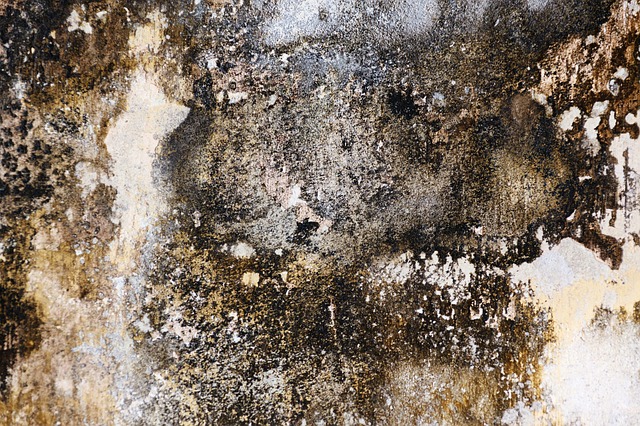Mould growth in buildings
Contents |
[edit] Introduction
TG 26 Mould in Buildings, A BSRIA topic guide, written by Spyros Efthymiopoulos & Yasemin D. Aktas, and published by BSRIA in 2024, states: 'Mould is a subcategory of the fungal kingdom. It is broadly composed of spores and filaments, known as hyphae as shown in the image below. These collectively form a filamentous network called mycelium. Mould is ubiquitous in indoor and outdoor environments. As a large portion of the fungal kingdom, moulds account for thousands, if not millions, of known and unknown species.'
Mould (sometimes referred to as mildew) is a fungal growth. Whilst mould itself is not toxic, some moulds can produce toxins that can have negative effects on human health, for example causing asthma, rhinitis, itchy eyes, respiratory symptoms, respiratory infection and eczema.
Mould in buildings can be visible or can be hidden, but it is generally an indication of a defect such as thermal bridging, condensation, leaks or penetrating or rising damp.
Mould requires four factors for growth:
- Mould spores.
- Food.
- Appropriate temperature.
- Moisture.
[edit] Spores
Mould spores are microscopic (ranging from 3 to 40 microns) and ubiquitous in the environment. Mould spores can be found floating in the air and in normal house dust. It is not generally practical therefore to eliminate mould spores and this is not a strategy for controlling mould growth.
[edit] Food
Mould will feed on any substance that contains carbon atoms (such as organic substances). Many of the natural materials found in the built environment provide suitable food for mould, such as timber and paper. Removing sources of food for mould from an environment is generally impractical.
[edit] Appropriate temperature
The majority of moulds grow well in a range of temperatures similar to those that humans require. This temperature range is wide, and even temperatures close to freezing will not prevent growth. In warmer environments, moulds will thrive. It is generally impractical therefore to control mould growth through temperature.
[edit] Moisture
Most moulds require relatively high levels of moisture in order to grow. The majority require an equivalent of at least 70% relative humidity to thrive and most large mould outbreaks in buildings, occur where porous, cellulose-type materials contain persistent liquid water or condensation.
Humans typically prefer humidity levels below 70% and so limiting moisture availability and killing and removing active mould colonies is generally the easiest method of control.
For more information, see Moisture.
[edit] Methods for reducing moisture levels
In Europe, depending on the country, it is estimated that between 10% and 50% of buildings are damp (ref. WHO Europe, Damp and mould, Health risks, prevention and remedial actions 2009).
Moisture levels can be reduced through a number of measures:
- Natural or mechanical ventilation.
- Use of de-humidifiers or air conditioning units.
- Insulation of cold surfaces, such as pipes.
- Increasing air temperature.
- Removing sources of moisture such as drying clothes and ensuring vented tumble dryers are appropriately vented to the outside.
- Mending leaking pipes, wastes and overflows.
- Eliminating rising damp and penetrating damp.
[edit] Related articles on Designing Buildings
- Approved Document C.
- Aspergillus.
- BSRIA topic guide on mould in buildings TG 26/2024.
- Condensation.
- Damp and timber report.
- Damp proofing.
- Degradation of construction materials.
- Dry rot fungus.
- Humidity.
- Moulds in historic buildings.
- Moisture.
- Penetrating damp.
- Recognising wood rot and insect damage in buildings.
- Rising damp.
- Rising damp in walls - diagnosis and treatment (DG 245).
- Stachybotrys.
- Wet rot.
[edit] External references
Featured articles and news
RTPI leader to become new CIOB Chief Executive Officer
Dr Victoria Hills MRTPI, FICE to take over after Caroline Gumble’s departure.
Social and affordable housing, a long term plan for delivery
The “Delivering a Decade of Renewal for Social and Affordable Housing” strategy sets out future path.
A change to adoptive architecture
Effects of global weather warming on architectural detailing, material choice and human interaction.
The proposed publicly owned and backed subsidiary of Homes England, to facilitate new homes.
How big is the problem and what can we do to mitigate the effects?
Overheating guidance and tools for building designers
A number of cool guides to help with the heat.
The UK's Modern Industrial Strategy: A 10 year plan
Previous consultation criticism, current key elements and general support with some persisting reservations.
Building Safety Regulator reforms
New roles, new staff and a new fast track service pave the way for a single construction regulator.
Architectural Technologist CPDs and Communications
CIAT CPD… and how you can do it!
Cooling centres and cool spaces
Managing extreme heat in cities by directing the public to places for heat stress relief and water sources.
Winter gardens: A brief history and warm variations
Extending the season with glass in different forms and terms.
Restoring Great Yarmouth's Winter Gardens
Transforming one of the least sustainable constructions imaginable.
Construction Skills Mission Board launch sector drive
Newly formed government and industry collaboration set strategy for recruiting an additional 100,000 construction workers a year.
New Architects Code comes into effect in September 2025
ARB Architects Code of Conduct and Practice available with ongoing consultation regarding guidance.
Welsh Skills Body (Medr) launches ambitious plan
The new skills body brings together funding and regulation of tertiary education and research for the devolved nation.
Paul Gandy FCIOB announced as next CIOB President
Former Tilbury Douglas CEO takes helm.
UK Infrastructure: A 10 Year Strategy. In brief with reactions
With the National Infrastructure and Service Transformation Authority (NISTA).























